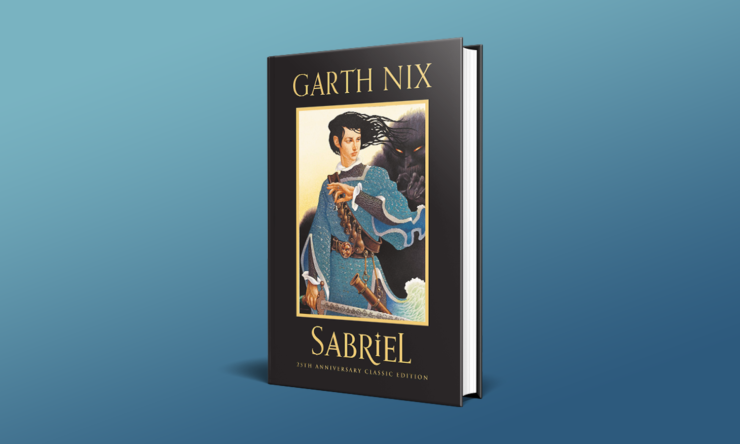Despite the best efforts of my parents, I grew up weird. They tried to interest me in wholesome, appropriate activities like horseback riding and ballet and in return I spent hours laying on my floor with my arms crossed over my chest wondering what a grave felt like. I don’t know why I did it. My sister is incredibly (by most standards) “normal,” in the sense of NOT being fascinated by things like death or witchcraft. I can’t tell you why some little girls become Misty of Chincoteague and others become Wednesday Addams. All I know is that I spent a lot of my childhood learning about various afterlifes, mummification, and Victorian memento mori.
My mother, who tried so damn hard to make me “normal,” did her best to keep me in books. She felt books were a safe place for my mind and they kept me out of trouble. I was a voracious reader and devoured any book placed in my hands. My mother was a teacher and would work the yearly Scholastic Book Fair, always squirreling away some books for me. That’s how I think Garth Nix’s Sabriel, one of the foundational books of my life, first found its way into my hands. I don’t think my mother had read the back of the book, or else she would have never given it to me. She saw the paperback cover, recognized it as a fantasy novel in the same vein as the others stacked high in my bedroom, and figured it would be fine.
I was delighted. I remember getting the book with its pretty painted cover, laying on my bed, and opening it to find the one of the best fictional interpretations of death and the afterlife that has ever graced a page. Sabriel is a stunning, inventive fantasy, a heady mix of modern and medieval, but it’s also a fantastic tale on the gentle existence of what comes after we die and where we go. I would eventually go on to read all the books in the Old Kingdom series, but Sabriel remains the crown jewel of the collection. Garth Nix created something so revolutionary that I’m still awestruck by it today. You don’t have to be a weird goth girl like me, who used to put coins over her eyes and wonder what she’d talk about with Charon during the boat ride to the Other Side, to find an appreciation and acceptance of Sabriel’s kind, no-nonsense vision of Death.
Sabriel is the story of the titular Sabriel who is tasked with trying to find her missing father. The only problem is her father is the Abhorsen, the realm’s most powerful necromancer. With his trusty bandoleer of enchanted bells he can raise or put down the dead. He can also step into the cold, clear waters of death itself, walking through a series of gates, deeper and deeper into the underworld. In the beginning of the book, Sabriel is in a girls’ boarding school in the country of Ancelstierre, which feels like a version of 1940s post-war Australia. Her father sends an undead messenger to her, explaining that he’s trapped in the seventh gate of Death and she must now return home to take up the mantle of Abhorsen, rescue him, and save the kingdom from a great and terrible evil.
It’s not your normal, by-the-book fantasy novel and that’s what makes it so incredible. Sabriel is sharp-witted, logically minded, and taciturn. She reminds me of Alanna from Tamora Pierce’s outstanding Tortal series, my other beloved childhood series. There are many fantasy series that feature strong-willed girls, though. There are not so many where that girl is a powerful necromancer who can raise the dead or who can slip into the underworld itself. For me, Sabriel was a dream come true.
Leaving her idyllic school behind, Sabriel crosses the Wall that separates Ancelstierre from the Old Kingdom to the north, a land of pure medieval fantasy. Her life is divided between two different places: One modern, one old. One of life, and one of death. She returns home and sets out on an adventure, gathering some of the requisite fantasy companions as she proceeds with her quest. There is Mogget, a talking cat with a shadowy past, as well as a love interest she rescues from being frozen in time on a distant, awful shore. The narrative hits all of the regular fantasy beats and tropes that you would expect, except that everything feels fresh and different in Nix’s capable hands. To a different author, Sabriel and her ilk might be seen as the villains of the story—fantasy is notoriously distrustful of necromancers, people who speak to the dead, and psychopomps. They are so often cast as sinister goths straight out of a Hot Topic clearance section or as mad, tortured souls. In Sabriel, necromancy is seen as just another skill, and death is treated with practicality and kindness.
Death is often caricatured in fiction. It can either be anthropomorphized as a looming, humorless grim reaper, dripping with both evil and malice, or as a big joke, played for laughs to make the concept of death much less scary. Recent decades have given us better, more thoughtful representations of this concept—as a character, Death from Sandman and Death from Discworld are two versions most people are familiar with (and often fond of). Sabriel’s take on the concept of death isn’t personified as a character, and perhaps that’s why it doesn’t get as much attention. I find that to be a shame, because it’s one of my favorite conceptions of what death is, and how it works: Death is nothing to be feared in Sabriel. It is neither good nor bad. It has a purpose to serve, a role to play, but it does not judge and it does not decide who is worthy of compassion or damnation. Sabriel wields her bells and they do her bidding; she is a conduit for death and that is cause for respect. Being the Abhorsen is one of the most important roles in the entire realm, and no one treats her or her family like they are evil or freakish for maintaining the borders between life and death. After a lifetime of reading books that relegated necromancers to sneering, morbid, conniving villains with a bone fetish, Sabriel was truly a breath of fresh air.
Buy the Book


Sabriel 25th Anniversary Classic Edition
Death is a many-faceted thing in this world, and Nix uses it to great effect in order to explore concepts and feelings in a way that feels straightforward, unvarnished, yet graceful. Sabriel is a book about death and it is also a book about loss. Neither are used for cheap shock value or to score emotional points. There aren’t massive plot twists that suddenly blindside the reader. Death is just another feature of life, as a path is part of larger forest. Loss is an inevitable byproduct—not so much a fall-to-your-knees-cursing-the-sky tragedy as it is just an inescapable part of living. It can’t be bargained with, much in the same way you can’t bargain with an ocean or a mountain or the stars. It is poignant, important, and should be treated with respect. Sabriel offers a reverent take on death itself, an understanding born through familiarity. Not right, not wrong…just there, present and inevitable. I find this to be such an important way of seeing death and dying. We live in a society that’s largely terrified by the mere thought of death. which makes processing grief and loss a hard, awkward, isolating road to walk along. We shy away from the idea of death and what it represents, and people who consider it with interest and not fear are considered to be violating a kind of taboo (or at the very least, accused of being rather weird). Sabriel instilled in me a frank, compassionate way of looking at death as something to be understood and accepted, not something to be afraid of.
In the world of SFF, necromancers have earned a bit more respect in recent years. Tamsyn Muir’s Gideon and Harrow of the storied, grim Ninth House have taken the idea of necromancy and death and woven them into a story where bone magic and skeletons are just a normal part of an average day. Our girl Sabriel walked so that Gideon could run (and swagger, and snark). Sabriel showed that death doesn’t always have to be the end—it can sometimes be the entire story, in its own right.
I wish that Sabriel was more widely celebrated, both in fantasy circles and beyond. It’s a beautiful novel, and the Old Kingdom series is full of inventive magic and wonderful characters that will stick with you for the rest of your days. In a perfect world it would have its own lavish Netflix miniseries and a companion tabletop RPG handbook by now. There’s just something about early and mid-’90s fantasy—too late to be deemed a “classic” and too early to have been swept along with the cultural explosion of YA fiction that began a few years later. It’s an oddly purgatorial time period in that many of excellent series from those years remain largely unsung by the mainstream, though championed by devoted acolytes. I could say much the same about Pierce’s Tortal, Patricia C. Wrede’s Enchanted Forest Chronicles, or even Brian Jacques’ Redwall, which was quite popular in its day but seems less visible now.
If you haven’t read Garth Nix’s Sabriel, I implore you to go grab a copy. Grab the whole series. Dive into the fascinating juxtaposition of modern-day, magic-less Ancelstierre and the medieval fantasy splendor of the Old Kingdom. Take up the bandolier of bells and wade into the river of death; find compassion in its currents, and come out a little less afraid and a little more curious. You won’t regret it.
Originally published August 2020.
Meghan Ball is a writer who enjoys playing guitar and spending way too much time on Twitter. You can find her there at @EldritchGirl. She currently lives in a weird part of New Jersey.










